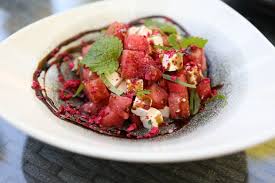Evolution of Street Food
treet food is more than just a quick bite — it’s a mirror of society, history, and culture. From ancient marketplaces to modern food trucks, the journey of street food tells the story of human connection through flavor.
In ancient civilizations, street vendors were a vital part of urban life. In Greece and Rome, people grabbed bread, olives, or hot lentil stew from roadside sellers. In China, portable noodle stands fed workers and travelers. These meals were affordable, fast, and comforting — the original “fast food.”
During the Industrial Revolution, as cities grew, street food became a lifeline for workers who didn’t have time to cook. Every region developed its own specialties: kebabs in the Middle East, tacos in Mexico, samosas in South Asia, and hot dogs in America. It was food made by the people, for the people.
In the modern era, street food has gone global. Today’s food trucks and night markets blend tradition with innovation — think Korean BBQ tacos, sushi burritos, and gourmet sliders. Social media has turned local favorites into global sensations, while chefs experiment with fusion and presentation.
Despite all the change, one thing remains constant — street food brings people together. It’s a celebration of taste, community, and culture, served with a dash of authenticity and a lot of heart.
Street food has been around for centuries — a vibrant reflection of culture, community, and creativity. What began as simple meals for workers and travelers has evolved into a global culinary phenomenon.
In ancient times, vendors sold quick, affordable meals in busy marketplaces — from bread and wine in ancient Greece to noodle soups in early China. Street food was born out of necessity: fast, flavorful, and accessible to everyone.
During the industrial age, as cities grew, street vendors became part of daily life, serving laborers on the go. Each region developed its own specialties — tacos in Mexico, samosas in South Asia, falafel in the Middle East, and hot dogs in the U.S.
Today, street food has transformed into a celebration of culture and innovation. Food trucks, night markets, and pop-up stalls blend traditional recipes with modern twists — think sushi burritos, gourmet sliders, and vegan shawarma. Social media has also fueled its popularity, turning humble dishes into viral sensations.
Read Also: Keep your face towards the sunshine and shadows will fall behind you
Yet, at its heart, street food remains the same — fresh, fast, and full of flavor, connecting people through shared experiences and authentic taste.
Streetfood has seen recent growth and resurgence in popularity, driven by consumers looking for unique and affordable food options and cafes and casual dining restaurants adding scaled street food to their menus.
This name-brand is characterized by ease of preparation, serving, and affordability, making it a go-to for consumers from all classes and segments.
History of street food:
Despite recent growth in popularity, street food has ancient and historical origins and has been mentioned in various Roman and Greek texts. In historical periods, limited spacing and availability of home kitchens even made it impossible to cook at home, and street food used to be the primary source of nutrition for many communities.
Cultural symbol:
While street food originated from a need to feed the working class, it has evolved to preserve food cultures worldwide and has become a symbol of the culture and ways of living that nations want to be represented by. Most well-known street food vendors worldwide rely on their roots and culture to define their menus and recipes.
The resurgence of street food:
A resurgence of street food occurred towards the end of 2009/10, as a global financial crisis hit the world and most restaurant owners and chefs found themselves out of business. As a result, metropolitan cities like London and New York saw sharp growth in the number of street food vendors, food trucks, and pop-up restaurants.
Social media trends and modernization of street food:
With a rise in social media and video platforms like TikTok and Facebook, food preparation videos of street vendors saw a sharp growth in popularity. A rebirth of street food took place, and as a result, more upscale restaurants and fast food chains also started adding street food items to their menus. These can include anything from messy tacos and burgers to meat and chicken rolls and quick and ready-made drinks and juices
Watch Also: https://www.youtube.com/@TravelsofTheWorld24















Leave a Reply